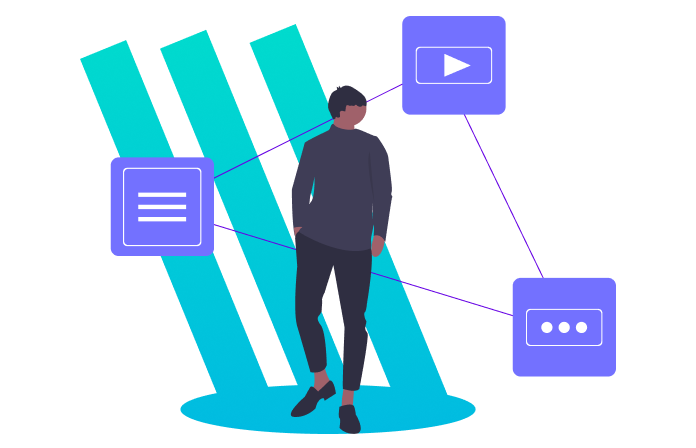Programiz germinated from the idea to provide the simplest programming resources for beginners. This idea came into being as we struggled to find great programming resources online as beginners. So, we took it upon ourselves to create a website where beginners could get started with programming. Our goal from day one was, and is, to create and provide high-quality programming resources to our readers.
Throughout the years, as we grew from 0 to 3.5 million users per month, our meaning of "high-quality resource" has also evolved. It now incorporates our values and goals coupled with a great design and user experience. However, the single most important factor that glues everything together is still a great content — a content catered to our readers.
But it is not that simple. After spending almost a decade working on Programiz, we still cannot interpret what exactly makes the content great. This is primarily because great content means different to different people and different industries. There's certainly no one thing or a group of things that makes a content great, or an algorithm that can create the perfect content.
However, throughout the years, we have narrowed down quite a few factors and made our own version of great content. And, through this article, we aim to share a small sneak peek of how we create great content with you.
Let's get started.
1. Select a Topic: Find topics that audiences will benefit from
This is one of the most important as well as the most difficult step. It takes lots of research. Luckily in our domain, there are predefined topics. However, our target audiences are beginner programmers. So we try to find topics that are essential for beginners.
Thus the first step towards great content is finding topics that will help you connect to your audiences. Find topics that your audiences are searching for and would benefit from. No matter how great your content is if your audience is not searching for it and does not provide any benefit to them then the content is of no use.
Now suppose we are creating content on Java programming for beginners. Since we are targeting beginners, then the contents on topics like Servlet, JSP, Maven, and so on would be of no use. We have to stick with topics that beginners would benefit from, like Java data types, Java Inheritance, Java Methods, and so on.
2. Keyword Research: To determine what should be included in the article
As mentioned earlier, choosing a topic is difficult but choosing a topic that people want is even more difficult. For this purpose, we use keyword research. The term keyword research is quite famous among the content writing and blogging community.
It gives you proper data on what people are searching on the internet. Based on that data, you can create content.
In our case, we use keyword research to find what our users are looking for in certain topics. That is, we are focusing on USER INTENT. I will be discussing it in detail.
For keyword research, we mostly use KWFinder and Keywords explorer from ahrefs. Both of these are paid tools. Let's see how we use these tools for keyword research.
Suppose we are writing content about Java inheritance:
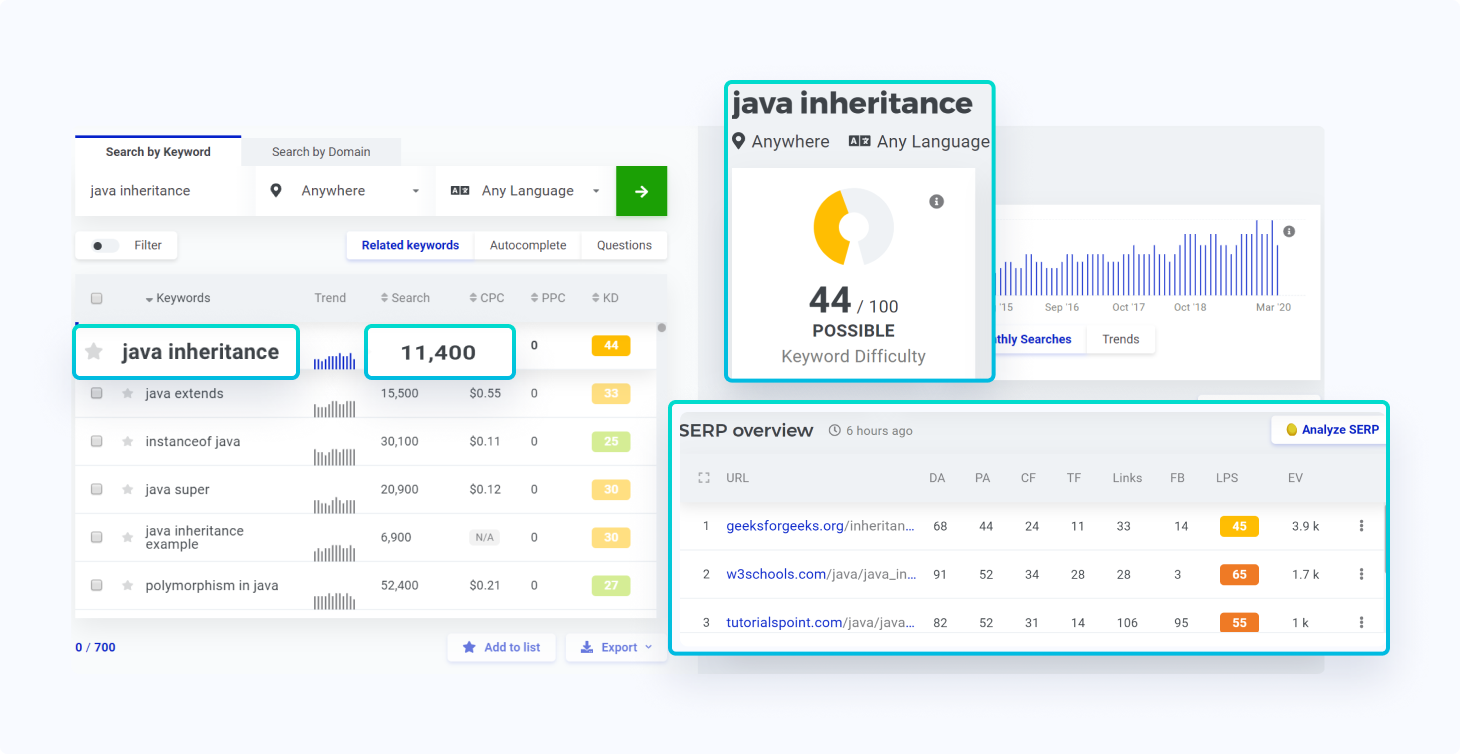
I like Ahrefs' Keyword explorer more.
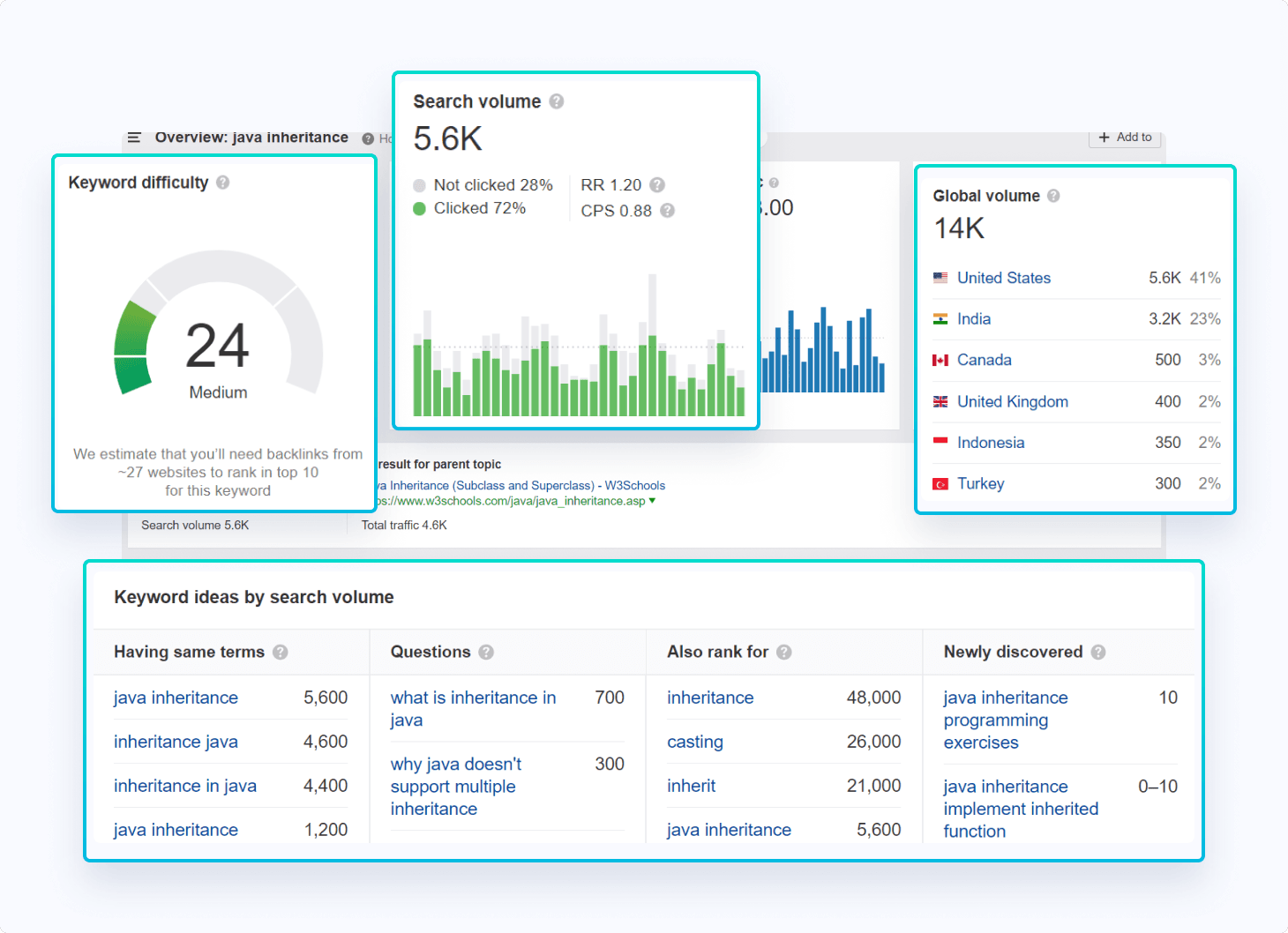
Here, you can see that these tools are giving us
- the search volume of the term Java Inheritance: this tells how much people are interested in that particular topic. We can also modify to get data from the specified location.
- the top-ranking page in that particular keyword: this tells who you have to compete with in that particular topic
- related keywords: this tells what are some related terms people search related to the topic
- difficulty metrics: this tells how difficult it is to rank in that particular topic
- location-based: we can also modify our research country wise. This is helpful if you are targeting users from a particular country
Besides these paid tools, we use some free ones as well. Like,
- Google autocomplete
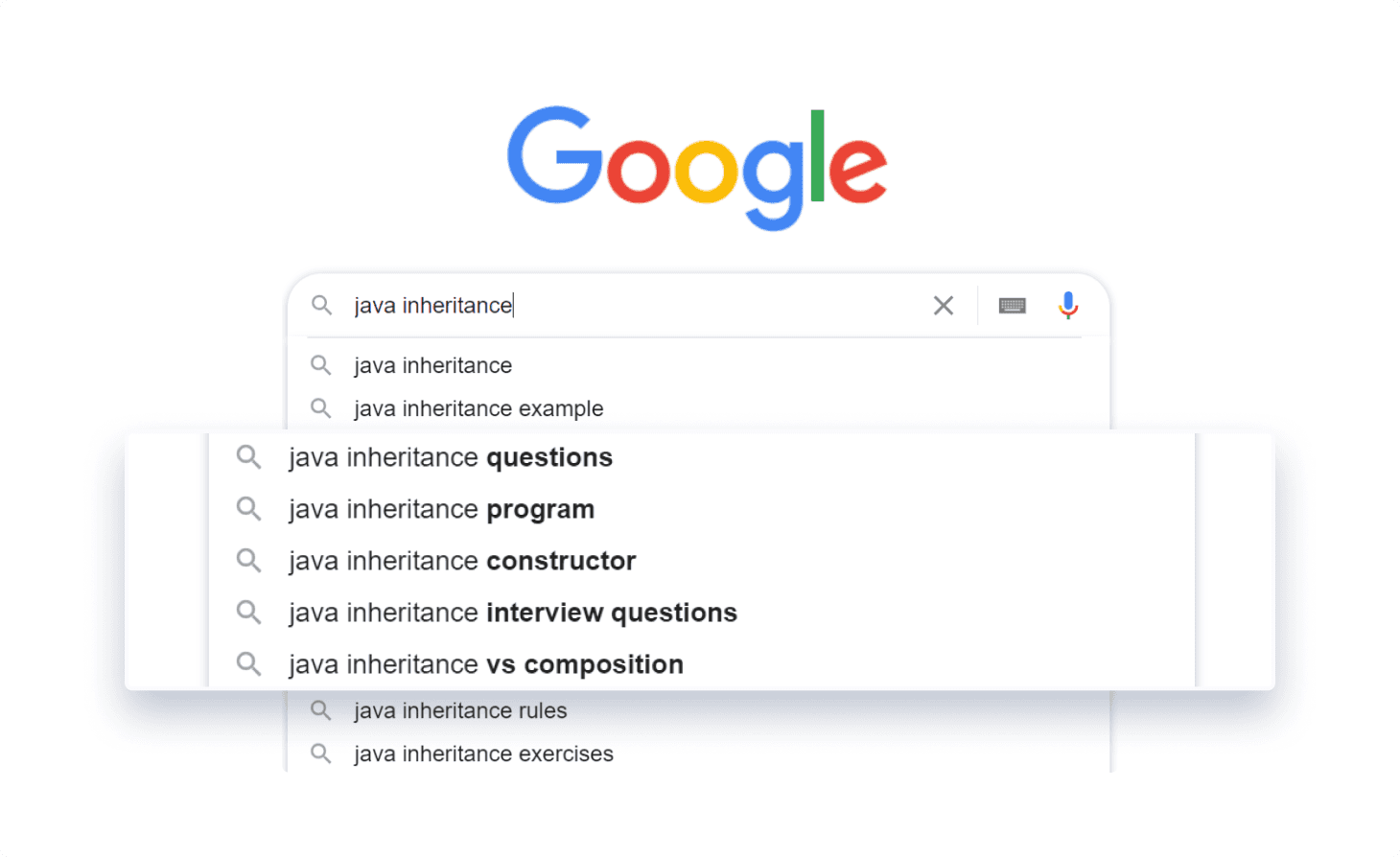
- Google's Keyword Planner
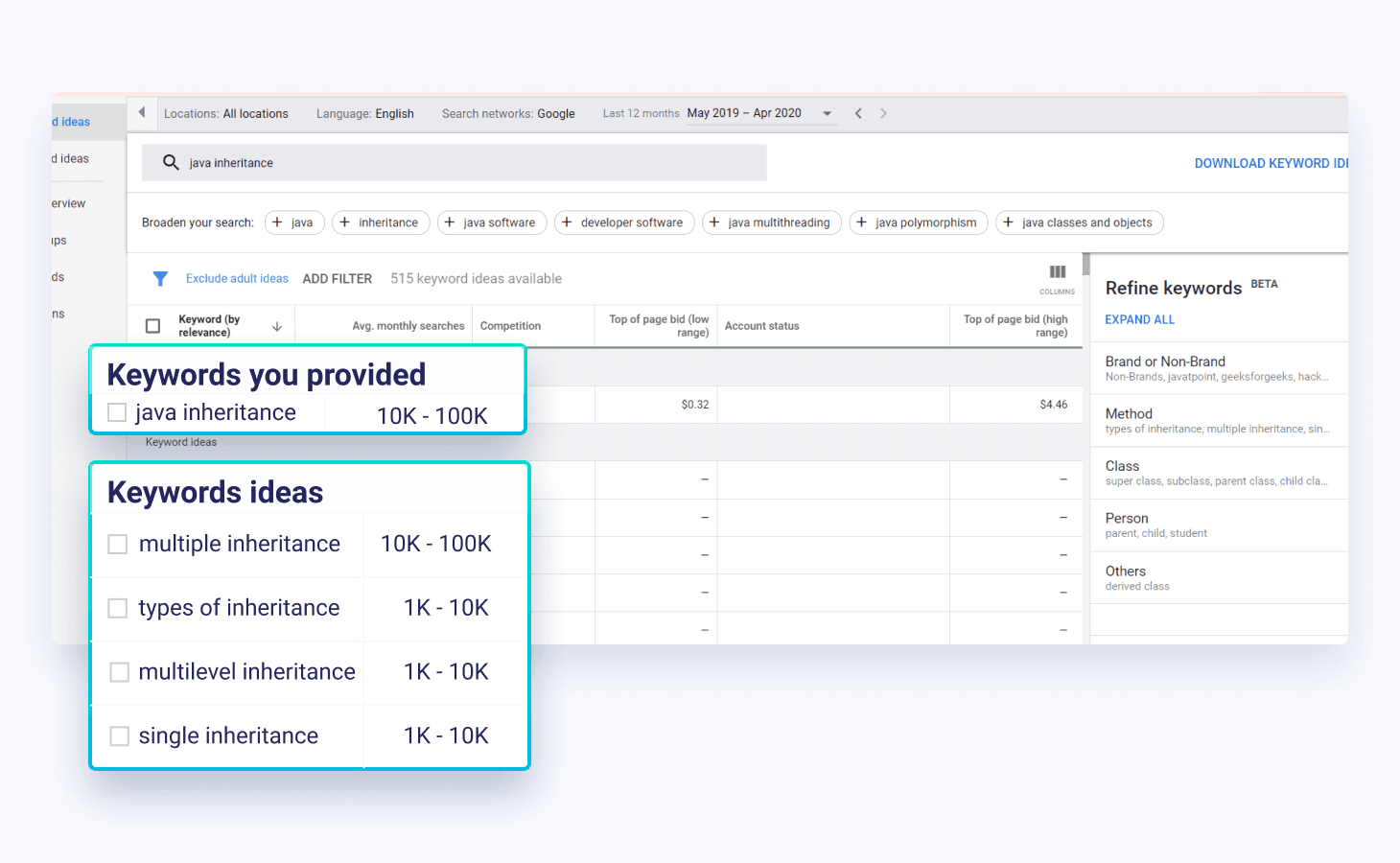
- "People also search for" and "People also ask" section in Google's Search Engine Result Page
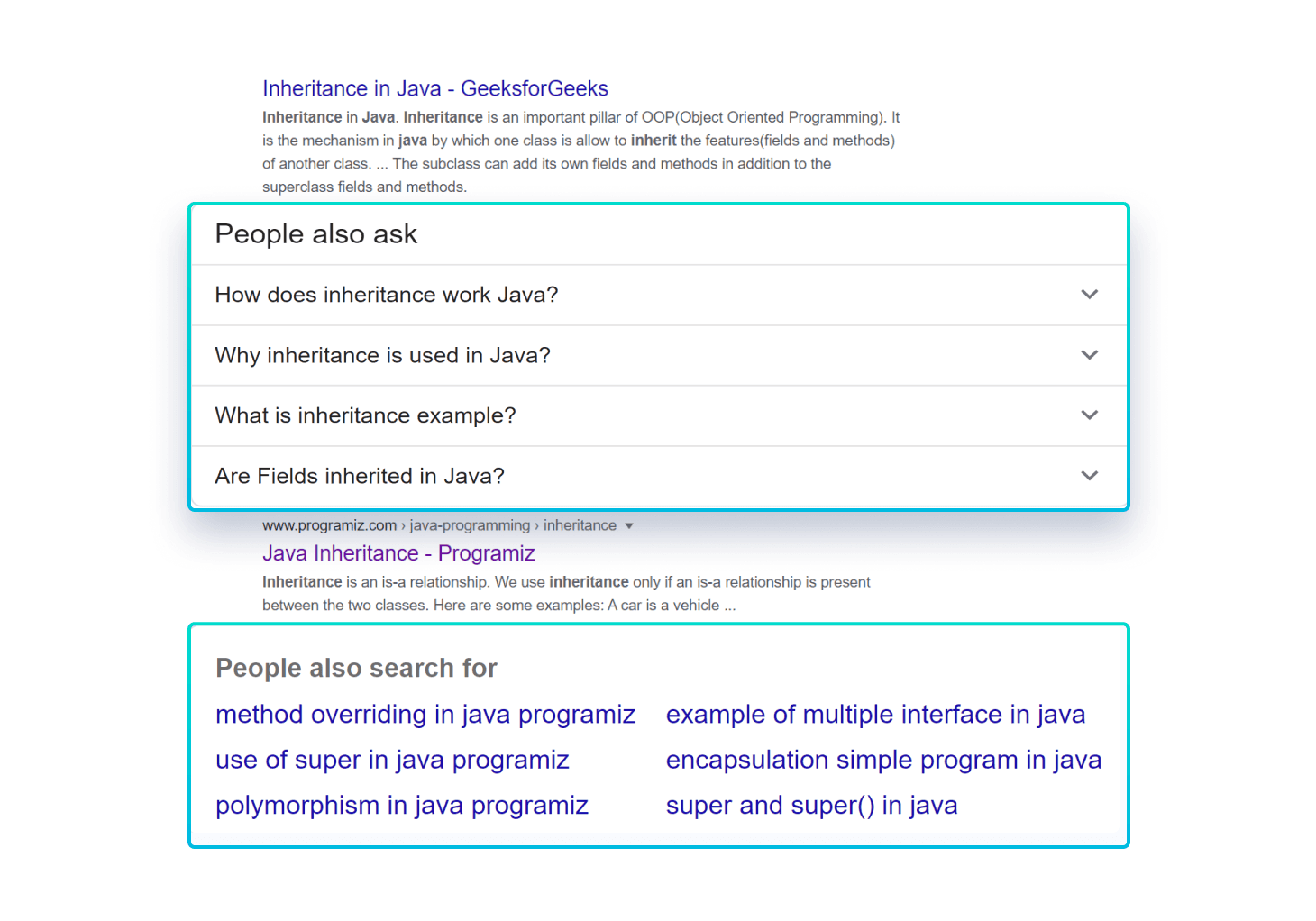
- "Search related to" section in Google's SERP
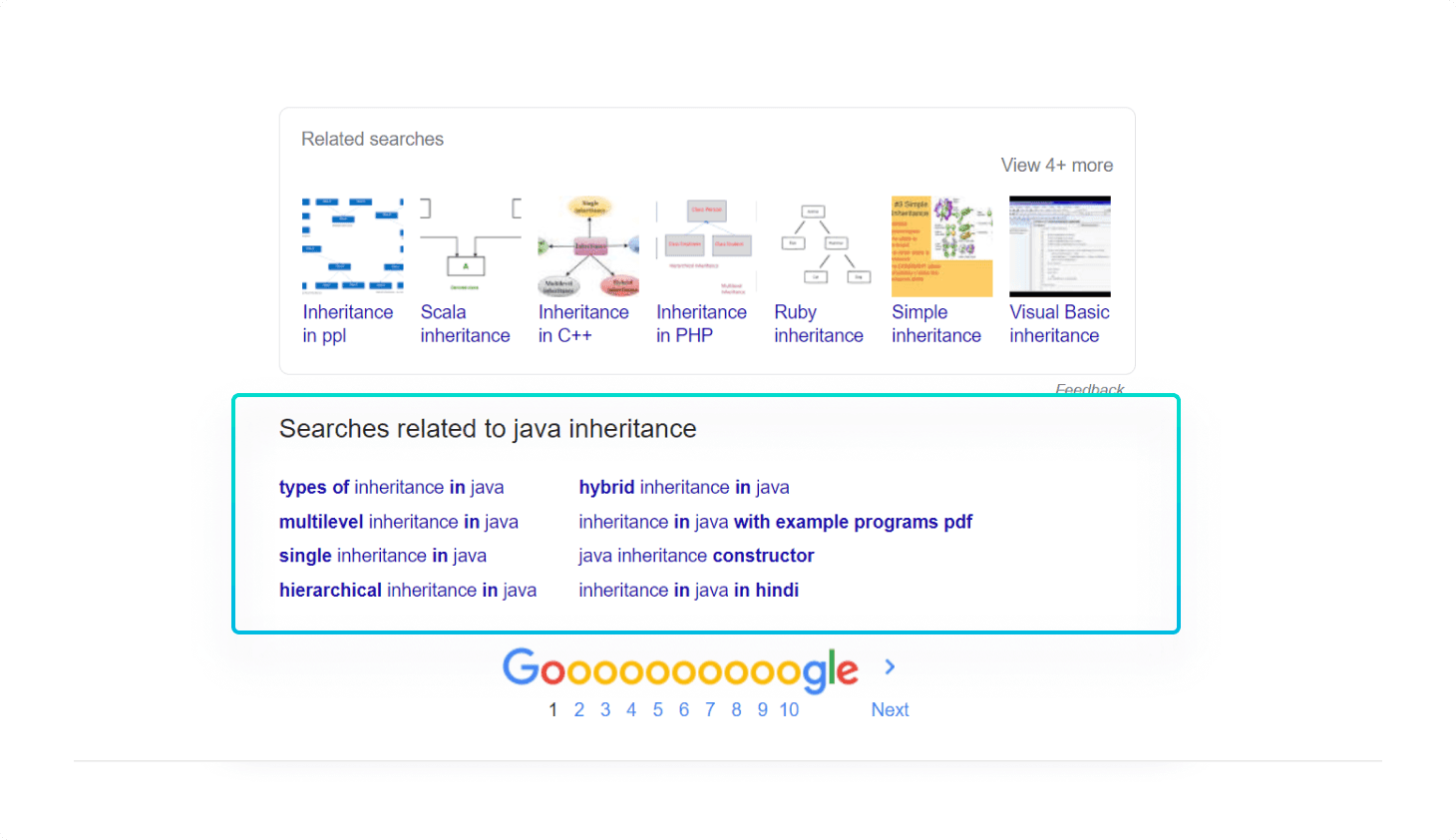
3. User Intent: Find how users would benefit from the article.
There is a saying in the SEO community: create content for users not for Google. And we are a strong follower of that principle. We always think about providing value to users. Now even Google has become so smart that if your content does not provide value to users, your content is not going to rank.
It is said that when you are able to create content that users can benefit from, then more than half of your SEO is done already. So, why not create content focusing on users rather than SEO?
Besides, when you look into the process of creating SEO content, it's similar to the process of creating content for users.
Now the question is, how to write content for users?
First things first, we think like a reader, not a writer. We are not creating content for ourselves, but our reader. So we have to keep ourselves in their shoes and then start creating content. This way we can connect to our readers.
A video series named Blogging for Business from Ahrefs has divided great contents into 4 categories:
- Emotion: Content that sparks emotion (anger, entertainment, happiness, etc) on people
- Utility: Content that provides value to people
- Numbers: Content with data and statistics
- Stories: Content that is easy for people to relate
Based on your domain and topics, you can choose what type of content you want to make.
Since we are an online tutorial site, we mainly focus on creating content that provides value to people. This does not mean we don't focus on creating other types of content. If our users can benefit from such content then we create them as well. In the end, it's all USER INTENT, right?
4. Content Outline: To have a clear vision of what we are going to write
We cannot write everything about certain topics in the name of providing value to users. There should be certain boundaries. This is why we always create the structure of our content.
This will give us an idea of what our content will look like. We will be able to determine what to include and what to exclude before actually writing.
Another advantage of the outline is connections in the content. Let me explain what this means. Here, we always try to maintain some sort of connection between the sentences and subtopics of our content. This is because we don't want users to be lost while reading content from start to end. If the first, middle and the last section of our article is not connected properly, users will learn 3 different things in a single topic. And I can tell you that is not good.
So how do we make a content outline?
We always start with keyword research. As mentioned earlier, this gives a better idea and understanding of topics that might be helpful for users.
Also, we always analyze the top 10 pages on that particular topic. This is always a good practice. It helps you know more about what has already been created. And might be helpful to create something unique and more useful. Also, we can find something that these pages are missing.
Suppose for the topic of Java Inheritance,
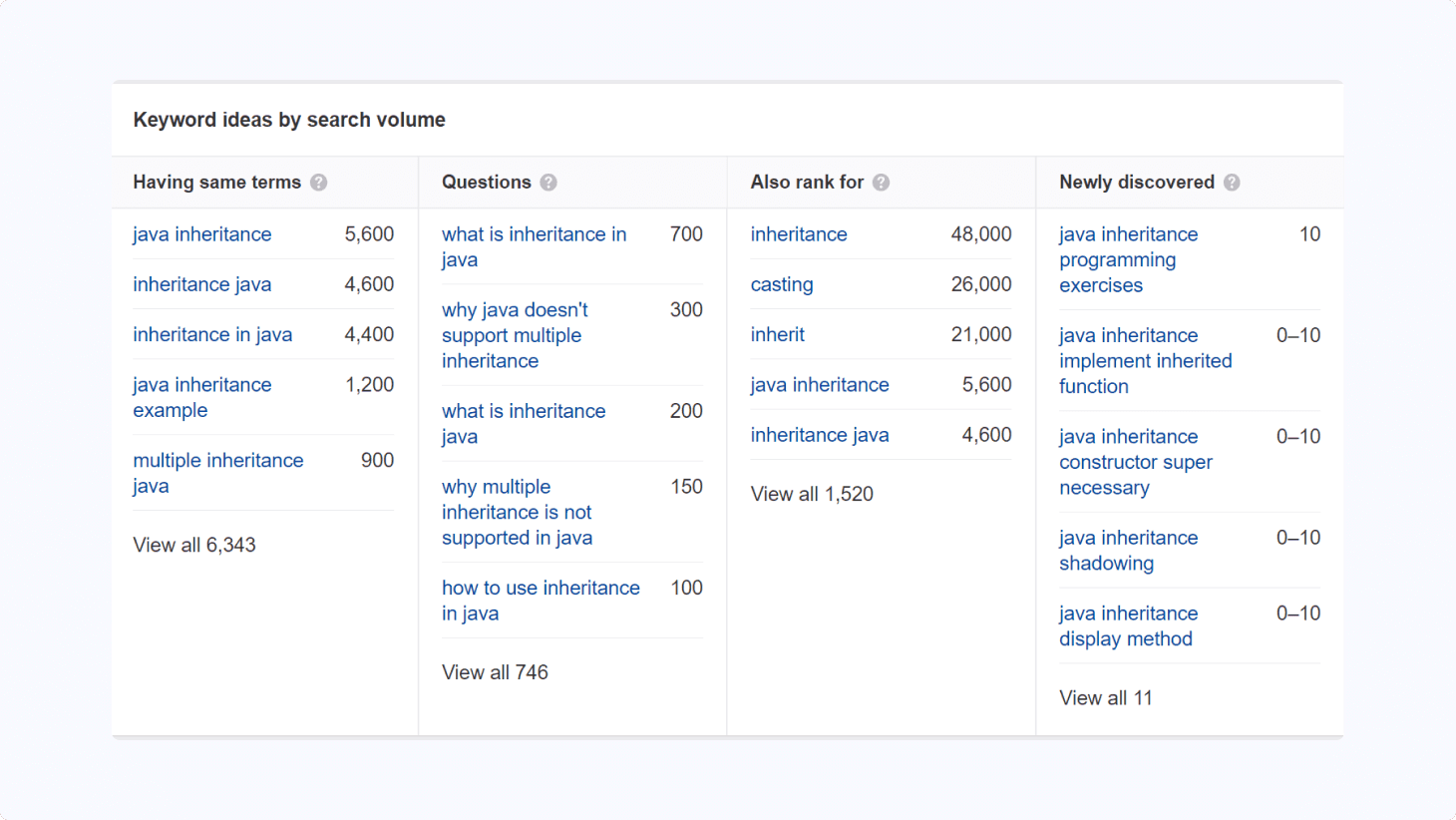
Now, if we expand any of them, we will get a lot of subtopics that can be included in the article. However, DON'T just start mentioning all those related terms in your content.
Remember, I have highlighted the word don't. So don't.
Now, the time has arrived. Time to use the USER INTENT part in your content. Think about what your users can benefit from and only use them.
5. Actual Content: What we include in our content?
All those steps will give us the structure of our content. Now that we have the structure of the content, it is time to create the actual content.
Originality is everything for us. We have our reputation to maintain. For this, we are always dedicated to creating unique and original content. Creating original content does not mean you have to always discover new things and write. You can take references as well.
References and Resources
We use multiple books, resources from educational sites, and answers from StackOverflow, Quora, and Reddit as references for our content.
And if we feel that our audiences will benefit from resources from other sites, then we always mention those sites in our content.
6. Continuous Update: To provide updated information
This is one of the important processes of content creation. Creating great content is not a one-time task, it is a continuous process. We need to keep improving all the time.
The world is changing so fast that the great content of today might be ordinary tomorrow. So, to provide an up to date information to our audiences, we need to continuously update our content.
Here at Programiz we are not always focused on creating new content. We dedicate a certain amount of time on improving the old ones as well.
Feedback: To update content based on audience responses
As mentioned before, we always write content for people of all ages and places. Despite all the efforts, some content might not be perfect for all users. There will remain some flaws in our article. So to resolve all the flaws and provide better content, we are always focused on getting feedback from our users.
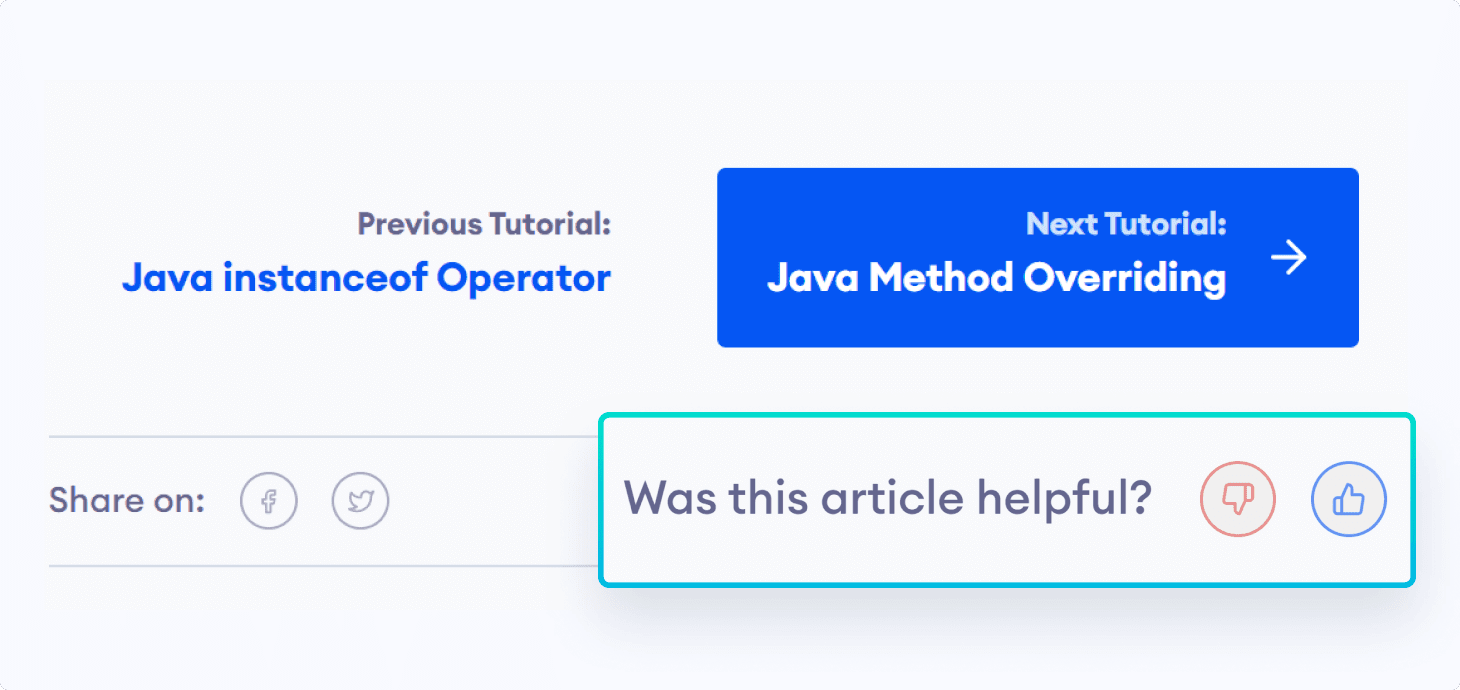
We have included the Article Feedback tool at the end of every article. We are getting continuous feedback from our users through this tool.
7. Tools used: How we have developed our content writing tool?
We explored every tool out there and found that Google Docs caters well to our needs of peer-reviewing every article. Since then we have been using Google Docs to write all of our articles.
Content Workflow System
To automate our content creation process, we use our in-house content workflow system. This content workflow system allows us to directly convert our Google Docs into HTML. Thus formed HTML is directly uploaded to the site.
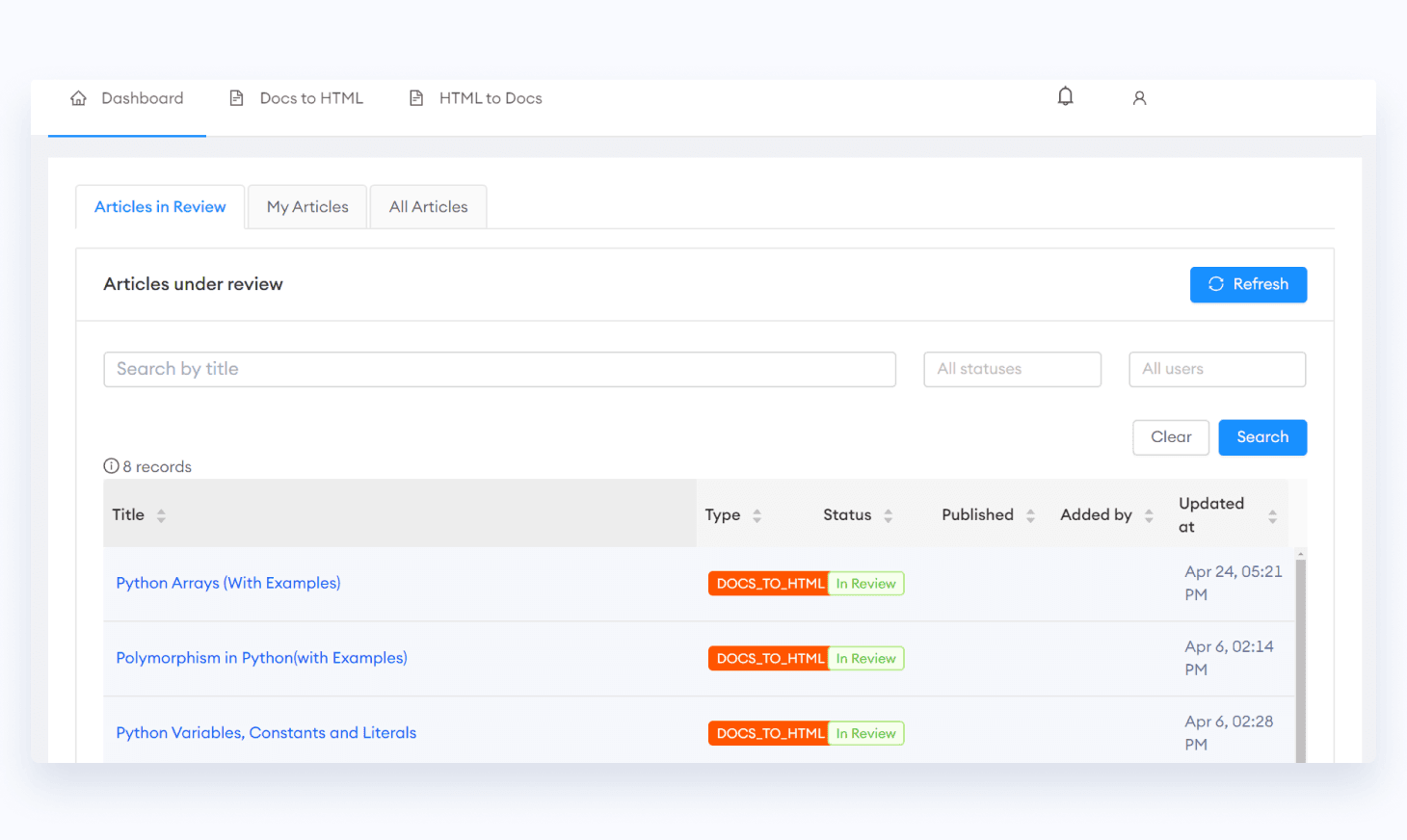
We can also create Google Docs from our website content using the URL. This helps us to edit and update our content.
You can learn why and how we developed our content workflow system at How we developed the Content Workflow System at Programiz.
Final Words
This is a lot of work and time. But it is not easy to create great content that stands out. And, a Great Content can express the vision of any company and help to build a prosperous brand. So, why not spend time on something that will help you for a long time?
With all the feedback from our users, we are improving every day. And knowing the fact that we are helping lots of people always inspires us to create more and more great content.
Subscribe to Programiz Blog!
Be the first to receive the latest tutorial from Programiz by signing up to our email subscription. Also more bonus like inside looks on the latest feature and many more.


